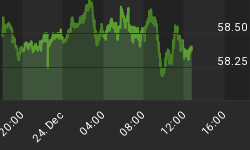Data releases from Germany and Belgium over the past twenty-four hours bode well for the strength of the Euro-zone economy heading into the summer months, confirm expectations of further interest rate hikes from the ECB, and pushed the euro to seven-month highs against the US$.
The German Ifo business sentiment index climbed to a new 15-year high in April, with the main business climate index reaching 105.9 (105.4 in March). The manufacturing component rose to 20.7 (19.2 in March) and companies were particularly bullish about their export prospects. However, sentiment in the retailing sector remained weak, with the retailing component sliding to -5.3 from -1.8 the month before. Sluggish consumer demand remains stubbornly unresponsive to improvements elsewhere in the economy, which could limit the extent of Germany's growth for the year as a whole.

German industrial output came out higher than expected in February, rising a seasonally-adjusted 1.0% on the month and up 6.4% on the year, after an upwardly-revised increase of 0.4% on the month and 3.8% on the year in January. Manufacturing output rose 0.6% on the month and 6.6% on the year (-0.6 and 4.6% in January). All told, this points to a solid start to the year after the weakness seen in Q4.

Meanwhile, it appears that inflation is headed upward again in Germany and perhaps the Euro-zone as a whole. Preliminary data from five of the German states showed consumer price increases between 0.3% and 0.5% on the month, suggesting an annual inflation rate for all of Germany that is somewhere over 2.0% (versus the 1.9% EU-harmonized rate seen in March). And that could presage a 2.3% to 2.4% climb in Euro-zone inflation.

Upcoming German data include the preliminary all-German CPI data and GfK consumer sentiment survey tomorrow, April unemployment on April 27, then the first Q1 GDP estimate on May 11. Euro-zone flash estimate April CPI is due April 28.
In Belgium the business confidence index for April recovered to its highest level since 2000, more than erasing the weak blip in March. (Recall that, thanks to Belgium's strong trade ties with its neighbors, this index is a leading indicator - about six months out - for GDP growth in the Euro-zone as a whole.) The index has climbed fairly steadily since Q2 2005, jumped into positive territory in February, slipped to +0.9 in March, then shot up to a six-year high of 4.3 in April. In marked contrast with last month, the retail sub-index dropped this month to - 8.2 (0.5 in March) while the manufacturing sub-index shot up to 6.4 (0.3 the month before) and construction to 7.0 (from 3.9). Interestingly, within the manufacturing sub-index the component on the trend in domestic orders recovered to +8 (having slid to +2 last month) and the component on the export order trend also recovered to + 18 ( from +6 in March). It looks as though the blips seen last month were just that - blips in an overall rising trend.

Speaking in Berlin today, ECB Governing Council member Weber repeated the comments being made by a number of Council members in recent days, saying he sees risks to price stability over the medium-term thanks to high oil prices, and adding that current interest rates remain low and ought to be "normalized." That seems to be the ECB's current favorite watchword - suggesting 25bp rate hikes every quarter or so, at least through the end of this year, with the next one on June 8. Look for confirmation of this with hawkish comments from the Council and from President Trichet at the May 4 policy meeting.
















